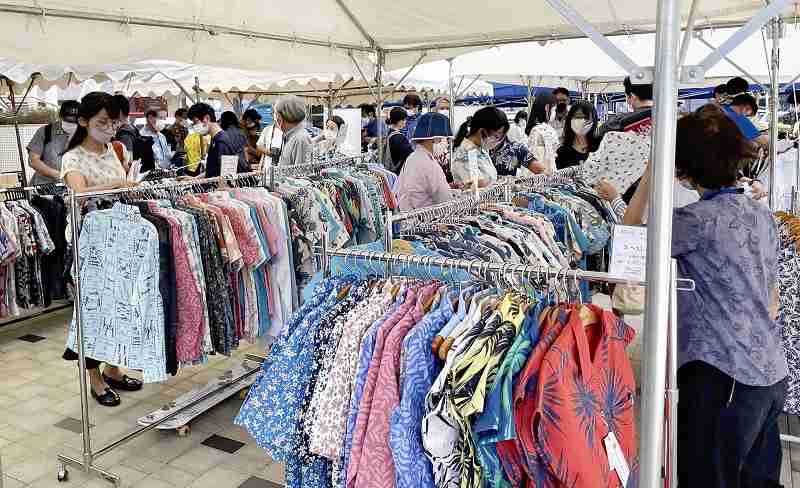Style of kariyushi wear extends beyond island

Kariyushi shirts are sold at an event in Naha in June.
11:41 JST, September 8, 2022
For business or pleasure with a dose of happiness and auspiciousness, don’t be seen in Okinawa without a kariyushi shirt or dress. The style known as kariyushi wear took shape in the years around Okinawa’s reversion to Japan. The origin goes back to 1970 when the Okinawa Tourism Federation’s president at the time came up with the idea of creating Okinawan shirts, using Hawaiian shirts as a reference.
What makes a kariyushi shirt is broadly understood as being manufactured in Okinawa and expressing Okinawan motifs. The basic style is an open-collar, short-sleeved buttoned shirt.
In 2000, an expert panel of the Okinawa prefectural government decided to use “kariyushi wear” as the collective term for the apparel. “Kariyushi” is an Okinawan word that means “happy” and “auspicious.”
During that year’s G8 summit in Okinawa, kariyushi shirts were worn by the leaders in attendance, drawing attention across Japan. This use in a formal setting was a precursor to the central government’s nationwide Cool Biz campaign that began in 2005, when businesses were requested to allow workers to forgo suits and ties in favor of apparel such as these shirts during the warmer months of the year.
The brightly colored patterns of kariyushi wear can be seen as inheriting the traditional artisanship of bingata dyeing. In recent years, products using fibers mixed with shell ginger stems and weathered coral have also become available.
According to the Okinawa Apparel Sewing Industrial Association, the number of kariyushi shirts and dresses manufactured increased from 44,000 in 1997 to 490,000 in 2014.



